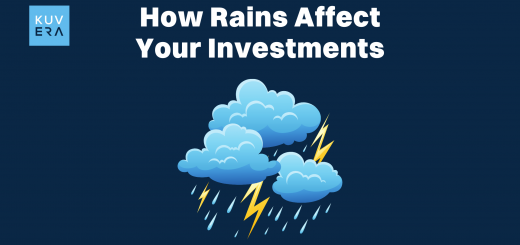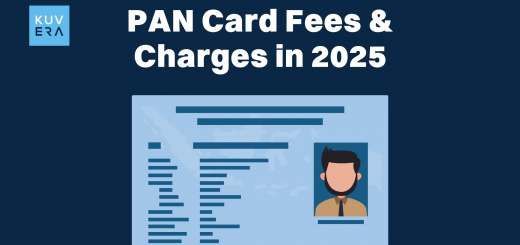What is Portfolio Diversification?
If portfolio diversification is to be summed up in a single sentence, it will be, “Don’t keep all your eggs in one basket”.
Portfolio diversification simply means diversifying your financial portfolio by investing your funds in multiple asset classes. This is done to ensure that the risk gets distributed across all the asset classes, and the good performing assets cover up the poor performance of any asset class.
The 4 Primary Components of a Portfolio Diversification
Following are the four primary components of an investor portfolio:
-
Equity:
When we talk about equity, we discuss every investment made in stocks, be it direct equities, diversifying mutual funds, index funds, etc. Equity can be a booster for your portfolio, but equities are riskier. The proportion in which you should invest in equity depends upon your age, investment goals, as well as your time horizon. Stock portfolios do not generate fixed returns and their performance depends upon the performance of the markets. Primarily, there are two major components of return from equities i.e., dividends and capital appreciation.
-
Debt:
Debt is a more secure component than equities. Debt instruments provide fixed returns to investors and are instrumental in generating passive income. Debt instruments are less volatile than equity instruments and thereby, carry lower risks. Returns from the debt instruments primarily include interest income and capital appreciation (primarily in the form of a premium on redemption of debt instruments). Capital appreciation is something that not all debt instruments will offer. You can invest in debt instruments in the form of government bonds, corporate bonds, debentures, etc.
-
Gold:
Gold is considered one of the safest forms of investment because of its inherent value. If you are considering investing in gold, the following are the options available:
- Physical Gold
- Gold ETFs
- Gold Mutual Funds
- Sovereign Gold Bonds
- Gold Monetization Scheme
Gold is considered a good hedge against inflation. Also, whenever the stock markets fall, the gold prices flare-up. This is primarily due to the fact that as the stock market falls, investors exit from the market to diversify portfolios. Hence, they go for more secure investment avenues. This increases the investment and demand for gold, thereby, shooting up the prices.
-
Real Estates:
Real estate investments are a preferred choice among millennials. As real estate prices continue rising, more and more investors are parking their funds in the real estate sector. One drawback of real estate investments is that they require huge capital infusion. However, Real Estate Investment Trusts (REITs) allow you to invest even with lower capital, opening the scope for a wide section of investors.
Additional Components of a Portfolio Diversification
While the above were primary components of a diversified portfolio, many more avenues are available for investors to park their excess funds. This can include:
Government Securities: Government securities are one of the safest investment forms as a government guarantee backs them. As the risk is low, government securities are instrumental in reducing the overall portfolio risk.
Provident Funds and Pension Funds: Provident funds and pension funds provide a lucrative option for investors looking to invest for the long term. This allows investors to save for a significant period of time which allows the amount to grow significantly.
Fixed Deposits: Fixed deposits are some of the least risky investment avenues. Your funds are kept with banks for a predetermined tenure on which you earn a fixed interest income.
How Can Diversification Help Reduce Market Volatility?
Diversification is one of the most effective portfolio strategies to tackle market volatility. For instance, the equity portion may fall if the stock markets are down. However, the investments in gold will increase. Also, the income generated from investments in bonds provides a consistent cash flow to the investors.
The impact of asset allocation on long-term performance and short-term volatility
While asset allocation reduces the risk of short-term volatility by providing a hedge against the same, most asset classes grow in the long term. An investor decides the asset allocation based on the investment goals and tenure of investment. While the growth in different asset classes may be different, the portfolio’s overall performance turns out to be good and in line with the portfolio investment goals of the investor.
Factoring Time Into Your Diversification Strategy
Portfolio diversification does not happen in a night. As your earnings increase, you look towards diversifying your portfolio over multiple asset classes. Thus, diversification is not a one-time exercise but a continuous process during your investment journey. Also, the assets in which you invest need time to grow and provide returns. Therefore, it is important to stay invested in the asset classes you invest in. This will ensure that you are not affected by the market volatility in the short term.
Interested in how we think about the markets?
Read more: Zen And The Art Of Investing
Check out all our “Investor Education Originals” videos on Youtube and get smart about investing.
Start investing through a platform that brings goal planning and investing to your fingertips. Visit kuvera.in to discover Direct Plans and Fixed Deposits and start investing today.
#MutualFundSahiHai #KuveraSabseSahiHai #PersonalFinance #InvestorEducation











